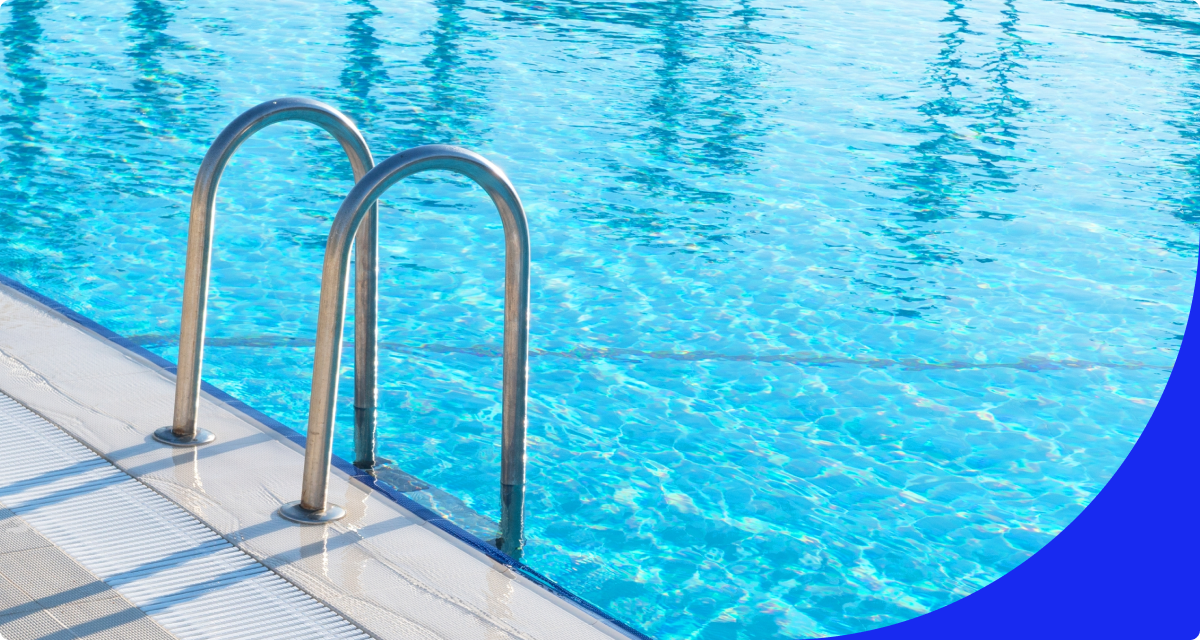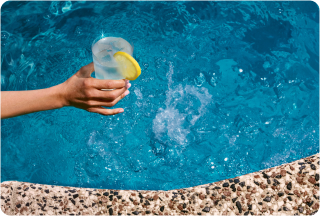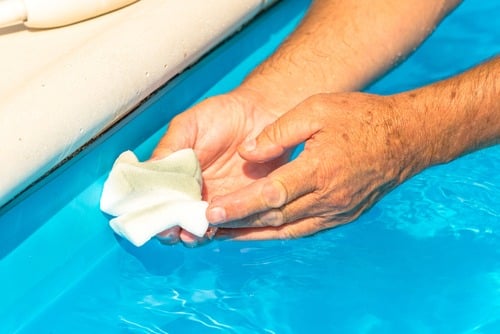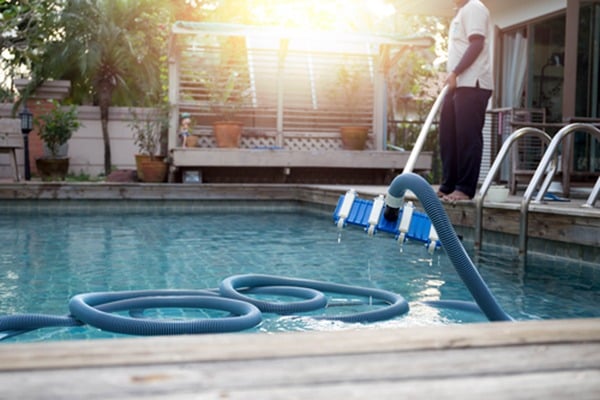The weather’s turning warm, and you’re ready to swim. But wait! Like every year, you’ve underestimated the number of steps in the pool start-up process.
While setting up your pool can at times feel so complex you need a chemistry degree for it, we’re here to walk you through every step of how to start up a pool. Follow along to get well on your way to crystal clear waters and fewer maintenance headaches, all season long.
Tools and materials
- Before we dive in, make these essentials a part of your pool start-up kit:
- Pool cover pump or sump pump
- Alkalinity, pH, and calcium hardness adjusters
- Skimmer net, vacuum, and brush
- Pool shock
- Pool test kit or test strips
- Pool-friendly cleaning supplies
- Chlorine or sanitizer of choice
- Lubricant for o-rings and seals
Step-by-step pool start-up checklist
If you’re interested in learning how to start up a pool, here’s the order in which you’ll typically proceed through the start-up routine:
1. Uncover and inspect
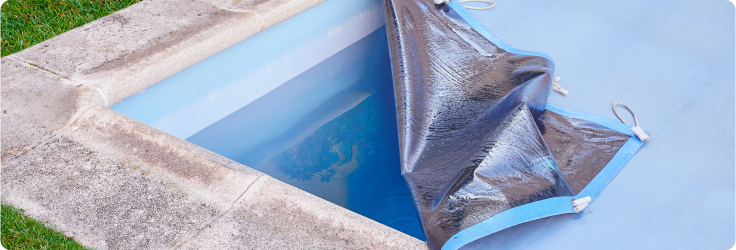
It’s likely been a long time since you’ve last examined your pool. Time for the big reveal!
- Remove the pool cover carefully to avoid dumping debris into the water.
- If there’s standing water on the cover, use a pool cover pump to drain it before removal.
- Once removed, clean the cover thoroughly, let it dry completely, and store it in a cool, dry place to prevent mold and mildew.
- Skim the pool surface to remove leaves, bugs, and other debris.
- Vacuum the pool floor and brush the walls to clear away algae and buildup.
- Inspect the pool for cracks, stains, or leaks— small issues now can turn into expensive repairs later.
2. Get your equipment running
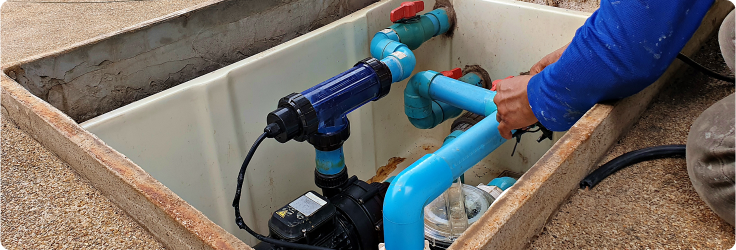
Before taking the next step in the pool start-up process, inspect the pump, filter, heater, and other pool equipment for cracks, leaks, or loose connections. Fix any issues before moving forward.
- Prime the pump by filling the strainer basket with water, then securely close the lid.
- Start the pump and let it run— listen for smooth operation and check for leaks.
- Backwash or clean the filter to remove built-up debris.
- Check that water is circulating properly through all returns and skimmers.
- Lubricate o-rings and seals to prevent wear and keep everything running efficiently.
3. Balance the water chemistry
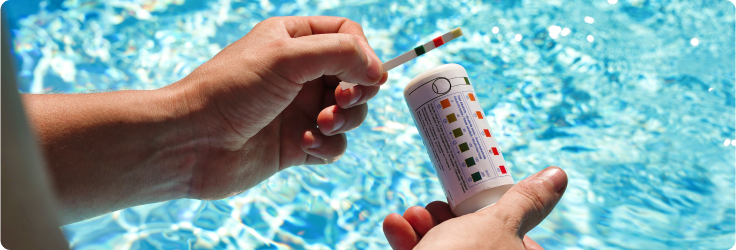
Over the off-season, your water level may have dropped— top it off to the recommended level before testing the chemistry. Using a reliable test kit or strips, check and adjust:
- pH: 7.2 – 7.6 (keeps the water comfortable and prevents damage to pool surfaces)
- Chlorine: 1 – 3 ppm (sanitizes the water)
- Total Alkalinity: 80 – 120 ppm (prevents wild pH swings)
- Calcium Hardness: 200 – 400 ppm (protects pool surfaces from damage)
Each test kit is unique, so be sure to read the accompanying instructions carefully. If your water needs balancing, adjust it accordingly with pH increasers/decreasers, alkalinity boosters, or calcium hardness treatments. Finally, hit it with a shock treatment to kill off any lingering bacteria or algae. Chemistry can be one of the most difficult parts to master in learning how to start up a pool, but it’s essential for keeping your water clean, safe, and crystal clear.
4. Check safety features
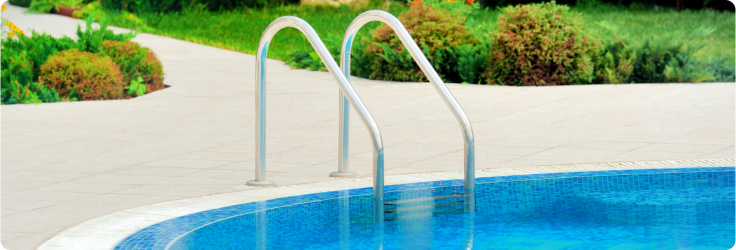
Before anyone takes the first plunge, make sure all safety features are in place. Ladders and handrails should be secure, fencing and gates should be intact, and any pool alarms or covers should be in good working order.
Tips for different pool types
While there are consistent strategies for swimming pool start-up, there are a few extra steps to add to the pool start-up process depending on which type you have:
Above-ground pools
Give the pool walls a gentle push— if they wobble, check for loose connections or rusting supports. Inspect the liner for wrinkles, tears, or signs of wear, and tighten any bolts or clamps holding the frame together.
In-ground pools
Walk the perimeter and look for any settling or cracks in the deck or coping. Even small shifts in the ground can lead to costly repairs down the line, so if you spot any major changes, it may be worth consulting a pool pro.
Saltwater pools
Your salt generator is the heart of the system, so check for any buildup on the salt cells and give them a good cleaning if needed. Make sure the generator is working properly before adding any additional salt to the water— you don’t want to overshoot and end up with an ocean instead of a pool.
